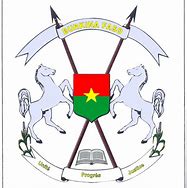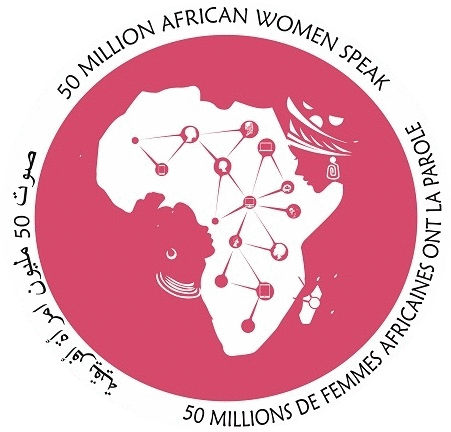Access to Markets - Burkina Faso
- Burkina Faso
- Resources
- Market Information
- Access to Markets

LOCAL MARKET/PUBLIC MARKET IN BURKINA FASO
MARKET / LOCAL / PRODUCTS
Images
In Burkina Faso and as in the other member countries of the ECOWAS region, the contribution of women to national economies is very significant and recognized at all levels. They play a major role in the formation of the gross domestic product.
Despite this leading role in economic growth, women face enormous economic and social challenges.
Public markets are sources of business for SMEs; but accessing it requires bidders to be equipped. The training offered by the Chamber of Commerce and Industry of Burkina Faso (CCI-BF) in the field of local and public markets is part of the support system it has put in place to facilitate access for SMEs.
The specific objectives are :
- facilitate understanding of procurement procedures;
- learn to recognize and assess risks;
- learn to define a positioning strategy;
- teach on the assembly of a file of response to a call for tenders (filling of forms, administrative documents, etc.);
- experience a role play of a response package submission process;
- learn to manage conflict
The different structures that facilitate trade in Burkina Faso
DIRECTORATE GENERAL FOR TRADE (DGC)
The DGC is a central structure of the MCIA. She oversees the implementation of the MCIA's trade development policy. It is responsible, among other things, for the negotiation, application and monitoring of trade agreements. Also, the promotion of Burkina Faso's trade with the rest of the world and also the promotion of local products.
- In 2017, the local market is driven by the preponderance of local products. Also imports of products increased overall compared to 2016. Imports of energy products (hydrocarbons and electrical energy) increased considerably in 2017 with an expenditure of 518,713 million CFA francs or 24.3%. total imports . Similarly, the import of non-petroleum products and purchases of medicines recorded an increase . Imports of consumer goods in 2017 increased by 10.8%.
As for the export market, the main export products experienced an evolution in 2017 compared to 2016. The top 10 export products (non-monetary gold, cotton, zinc, cashew nuts, sesame, shea, mango, etc.) account for 94.3% of all exports . In 2017, exports in value of peanuts, maize, cottonseed oil, silver, paddy rice increased. On the other hand, between 2016 and 2017, exports from promising sectors (cashew, sesame, honey, shea, mango, leather and skins, onion, live cattle, tomato, etc.) identified in the National Export Strategy (SNE) experienced a decrease. This situation is explained by the drop in the export of sesame seeds and hides and skins.
- Trade occupies an important place in the GDP. In 2009, this share reached almost 70% of GDP, making the sector one of the most important sectors in the Burkinabè economy according to the report on the state of trade and competition in Burkina Faso produced in March 2018. In 2017, Burkina Faso has intensified its trade with the rest of the world. The overall volume of trade in goods, which totals imports and exports, amounted to 3,735,448.8 million FCFA against a value of 3,442,985.5 million FCFA in 2016, an increase of 8. 4%.
For the local market, local products are promoted. Imports stood at 2,110,017.4 million FCFA in 2017 against 1,954,793.6 million FCFA in 2016, an increase of 7.8%.
As for the export market, exports from Burkina Faso amounted to 1,625,431.4 million FCFA in 2017 against 1,489,472.9 million FCFA in 2016, an increase of 9.1%.
In short, the rate of coverage of imports by exports has deteriorated relatively, going from 78.1% in 2016 to 77.0% in 2017.
Examples of exported products :
- Cotton, products from promising sectors such as sesame, cashew, shea, mango, onion, tomato, hides and skins, live animals, honey can be optimized to take full advantage of local markets and internationally.
Potential export markets for Burkina Faso are :
• ECOWAS zone: Côte d'Ivoire, Ghana, Togo, Mali;
• CEMAC zone: Cameroon, Gabon, Congo, Chad;
• AMU zone: Mauritania, Morocco;
• EU zone: France, Netherlands, Denmark, United Kingdom;
• South Africa, United States, Canada, Brazil, People's Republic of China, Japan, India, Singapore, Australia, New Zealand.
These markets are considered potential because of the importance of the value of Burkina Faso's exports to these countries in 2017. Also, the concern to improve border trade to promote trade with neighboring countries.
- AGOA is an opportunity set up by the United States to facilitate exports from sub-Saharan countries based on a number of quality requirements, sanitary and phytosanitary measures.
The African Continental Free Trade Area could be an opportunity in the sense that Burkinabe products will be exported to the area without customs duties.
Events concerning trade in Burkina Faso
Economic and commercial promotional days of Burkina Faso abroad. National and international fairs and shows ( FIMO, SIAO , etc.).





